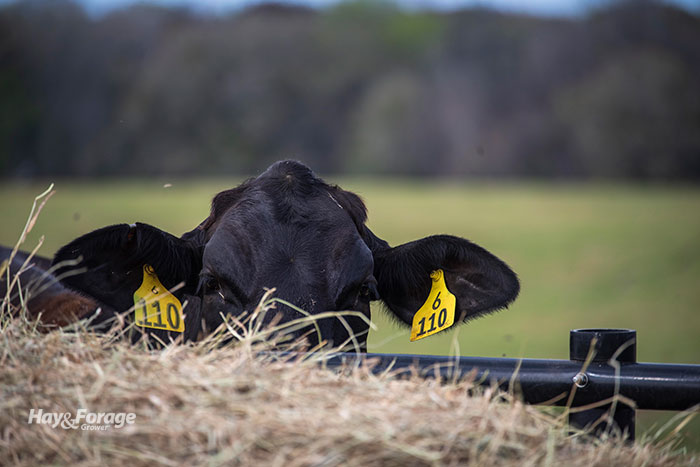Plan winter feeding to prevent pasture damage |
| By C.J. Weddle |
|
|
 There is no one-size-fits-all method when it comes to farming and ranching, and that’s certainly true when trying to prevent pastures from being torn up during winter due to wet conditions. Jessica Williamson, former Penn State Extension forage specialist, shares these eight tips on how to help prevent pasture degradation while still ensuring cows are well cared for. 1. Create a sacrifice pasture or lot By designating one area to sacrifice, Williamson says, “This saves other pastures from being damaged.” If worse comes to worst, and it nearly always does with winter weather and livestock, you don’t want to damage all of your pastures. In terms of forage stands and re-establishment, you are better off completely losing one small area than requiring maintenance to the entire farm. In some cases, you may already have a pasture that needs renovating. Using it as the sacrifice area can save time and resources in the spring. 2. Split your sacrifice area into two or more areas By splitting the sacrifice area into two or more sections, you gain more control over the conditions your livestock endures throughout winter feedings. “By confining the livestock in a muddy area, then allowing them into a drier area that they were not on previously can cause less destruction to your sacrifice pasture,” Williamson explains. 3. Target feeding Target feeding is very similar to moving water sources in the summer. By relocating feeding sites around the pasture, livestock are drawn to unpopular areas or paddocks with lower fertility, and this prevents overuse of any one specific area. 4. Bale grazing Rolling out bales is a unique way to feed round bales and prevent pasture damage. “This practice helps with distributing nutrients back to the soil as well as providing livestock a better opportunity to select the highest quality forage within a bale; however, it comes at a cost,” she warns. “It can lead to extreme waste – anywhere from 15% to 50% of bales, depending on the quality of the hay, how much forage is available for consumption, and the grazing habits of the livestock.” 5. Ring hay feeders Efforts to reduce waste can include feeding bales in ring feeders or grinding the forages and feeding them in bunks. Hay rings and portable bunks can be moved and used throughout the pasture. Much like target feeding, this method forces livestock to move around the pasture, evenly distributing damage and nutrients. 6. Stockpile forage for deferred grazing Although it’s too late at this point, stockpiling pasture for deferred winter grazing can be an excellent way to extend the grazing season and keep livestock grazing on pasture and out of the sacrifice lot longer. Forages need 70 to 90 days of growth prior to the end of the fall growing season to accumulate sufficient amounts of forage for grazing. Strip grazing will maximize the efficiency of your stockpiled forages by reducing trampling and waste. Williamson recommends maintaining at least 3 inches of residue height even though you are grazing the forage in a dormant season. The forage will require some stubble to initiate regrowth in the spring. 7. Select hardy species for sacrifice pastures “Select forage species that can withstand harsh, less than ideal conditions with dense root systems and high tolerance to frequent grazing,” Williamson asserts. By choosing hardier species to plant in sacrifice areas, you can improve stand quality and longevity of those pastures. Renovations will eventually be required but having hardy species in sacrifice areas can extend the life of those pastures between renovations. 8. Use structured feeding pads Structured feeding areas give you more control of winter-feeding conditions. By designating a concrete feeding area to place bunks or hay feeders on or constructing a building to provide dry shelter from the elements, you are able to control both living conditions and nutrient distribution. Concrete pads provide a stable foundation for livestock. Providing a covering or windbreak can help protect livestock from inclement weather conditions. Manure that collects on or around the feeding structures is easier to remove from the feeding site. After removing it, the manure can be composted and spread as fertilizer over the rest of the pasture during the next year. “Careful management and planning can help to reduce winter damage as a result of livestock feeding,” Williamson comments. “Each producer should analyze their past winter issues and assess the possibilities for overcoming severe pasture damage this year.”  C.J. Weddle C.J. Weddle served as the 2020 Hay & Forage Grower editorial intern. She currently attends Mississippi State University, majoring in agricultural education, leadership, and communications. She grew up on a farm in Vardaman, Miss., where her family raises sweet potatoes and soybeans. |
